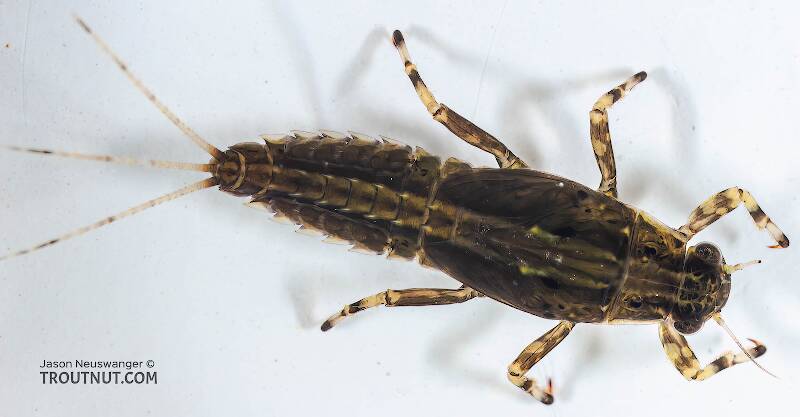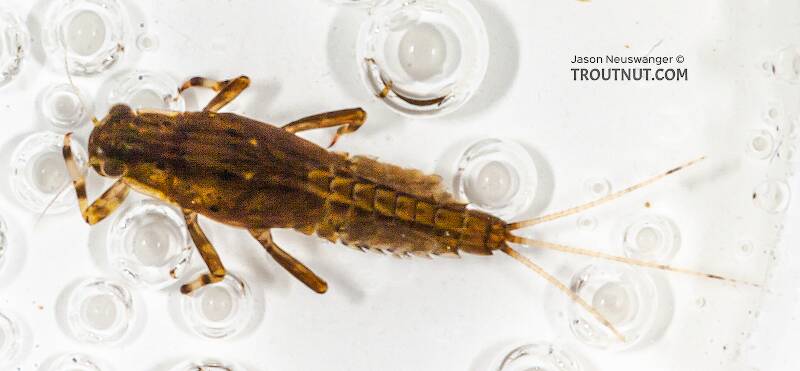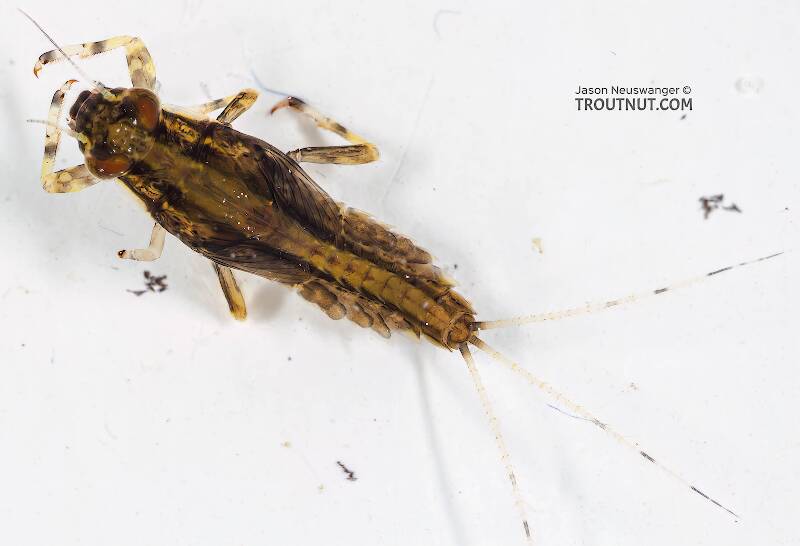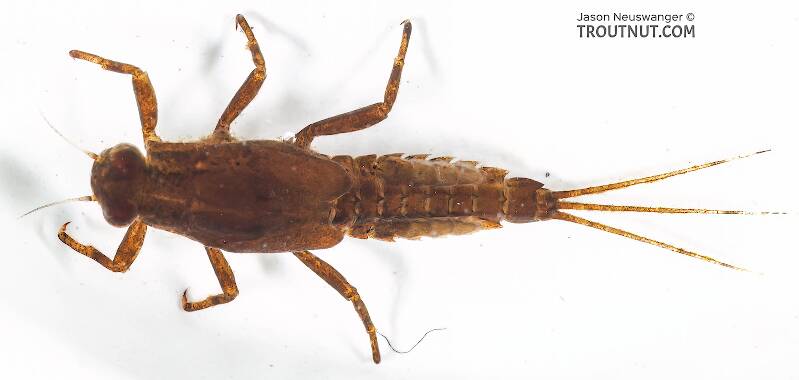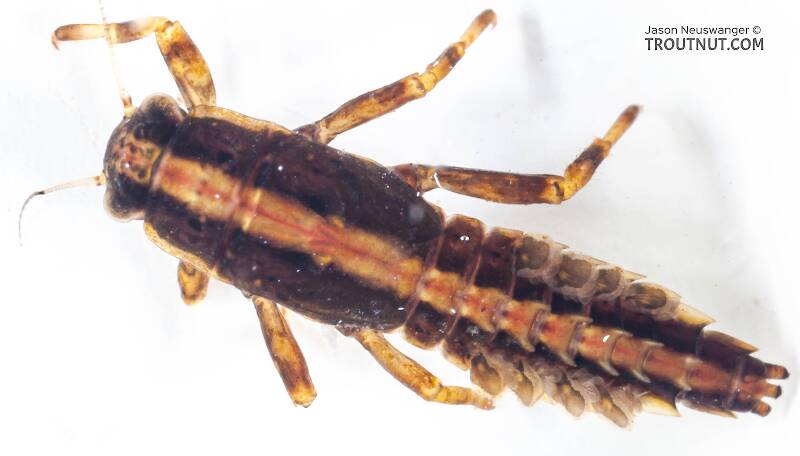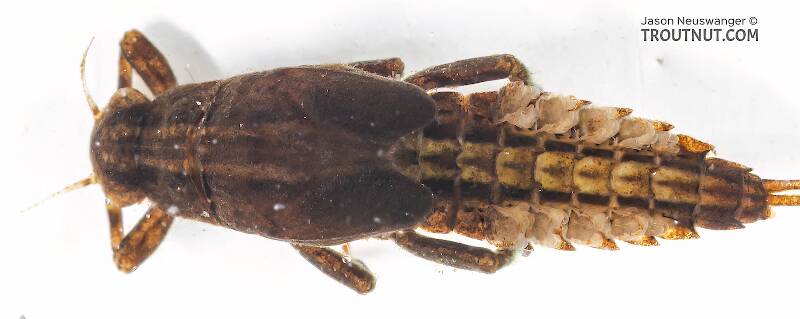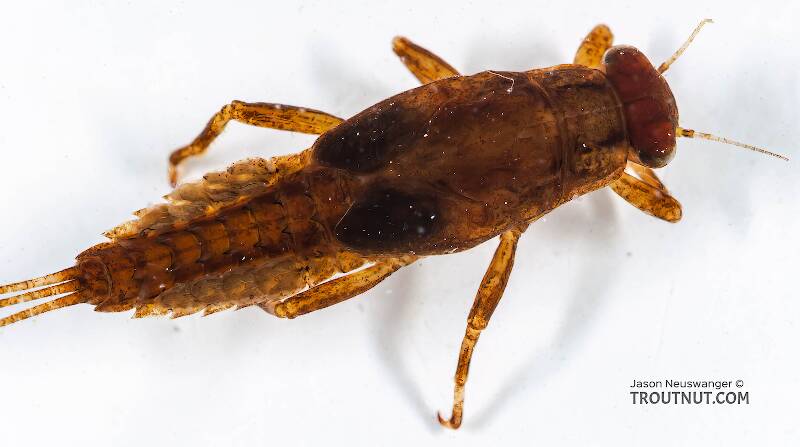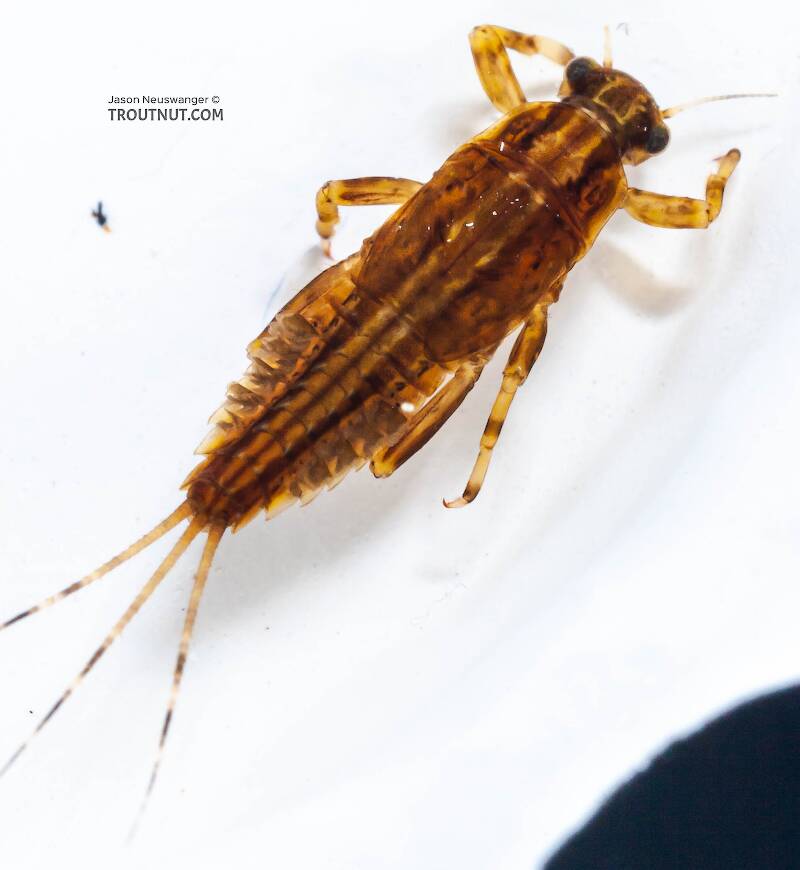
Hex Mayflies
Hexagenia limbata
The famous nocturnal Hex hatch of the Midwest (and a few other lucky locations) stirs to the surface mythically large brown trout that only touch streamers for the rest of the year.


Mayfly Species Ephemerella needhami (Little Dark Hendricksons)
"It was a wonderul morning, with a sky of indescribable blue and big, clean-looking cumulus clouds, and the water was sparkling and alive. You have seen the water with that lively look; you have also seen it dead and uninviting in a way that dampens the enthusiasm the moment you wade out into the current."
I have not fished a needhami emergence, but the exquisite nymphs show up often (though never abundantly) in my samples.
Where & when
There are reports of this species producing fishable hatches in Pennsylvania, New York, Connecticut, Michigan, and Wisconsin.Most authors say this hatch begins and peaks in late June and dwindles through most of July. However, in Mayflies: An Angler's Study of Trout Water Ephemeroptera , Knopp & Cormier list a different emergence date than other authors, stating that the hatch can begin in late May. I suspect this refers to the warmer climate of southern Pennsylvania, while others gave dates for the Catskills and Michigan.
In 16 records from GBIF, adults of this species have been collected during June (56%), May (19%), July (19%), and April (6%).
In 4 records from GBIF, this species has been collected at elevations of 26, 459, 480, and 869 ft.
Species Range
Hatching behavior
Knopp & Cormier report that the male and female duns are different colors and vary from stream to stream. Ernest Schwiebert in Nymphs Volume I: The Mayflies: The Major Species reports that they take off from the water quickly after emerging, meaning nymph and emerger patterns might be more appropriate than dun imitations.Spinner behavior
Time of day: Evening
Habitat: Riffles and runs
Nymph biology
Current speed: Medium to Fast
Substrate: Usually vegetation, occasionally elsewhere.
Physical description
Most physical descriptions on Troutnut are direct or slightly edited quotes from the original scientific sources describing or updating the species, although there may be errors in copying them to this website. Such descriptions aren't always definitive, because species often turn out to be more variable than the original describers observed. In some cases, only a single specimen was described! However, they are useful starting points.
Male Spinner
Wing length: 6-6.5 mm
A rather small, dusky species, having a brownish area at the base of the fore wing; venation faint smoky, brownish at base; no spines on penes.
Head dark reddish brown; frons yellowish; antennae reddish brown; eyes bright orange-red. Thorax deep red-brown, the pronotum largely black; mesonotum brownish black. Sternum somewhat paler, tinged with yellowish. Fore leg smoky brown, the femur slightly paler than tibia and tarsus, and with a small reddish apical spot. Tibia about twice as long as the femur. Middle and hind legs yellowish, the femora usually with a longitudinal ruddy streak and a reddish apical spot. Wings hyaline; a brownish spot at the base of the fore wing; longitudinal veins faintly smoky; Sc and R of the fore wing brownish at extreme base. Stigmatic area opaque whitish; cross veins anastomosed near the costal margin.
Abdomen deep reddish to blackish brown dorsally, usually tinged with wine-red. Posterior margins of tergites blackish brown. Traces of pale brownish submedian streaks on each side of the dark median line may be present. Pleural fold blackish brown. Venter usually, but not always, distinctly tinged with wine-red. Dark markings consist of two short oblique submedian streaks at the anterior margin, and two small dark dots nearer the center of each sternite. Genitalia light reddish brown. Second joint of the forceps not swollen at the apex. Penes separated apically by a wide rather V-shaped notch; no spines are present (see fig. 155). Tails deep smoky brown; joinings not distinct.
Nymph
The nymphs are rather variable in color pattern, ranging from dark reddish brown to almost black; usually but not always, a broad pale median line is present on thorax and abdomen. Within this pale stripe may be a dark median line; the pale stripe itself is bordered by darker stripes. The prothorax is pale on the lateral margins; on the mesothorax, between the wing buds, are often two small pale rounded spots. Head and thorax smooth. Tergites 2-8 each bear erect dorsal spines, shortest on tergite 2, where the spines are also closest together. On the following tergites the spines are roughly parallel, not diverging as in E. hystrix (Now a synonym of Caudatella hystrix). Each spine bears several minute spinules on its upper surface. Lateral extensions of the abdomen only moderately developed, and with short postero-lateral spines. Venter marked as in the imago, with dark submedian oblique streaks at the anterior margin and two dark dots nearer the center of each sternite. Tails pale yellowish, with one or two dark bands at the base and apex only.
Specimens of the Mayfly Species Ephemerella needhami
1 Male Dun
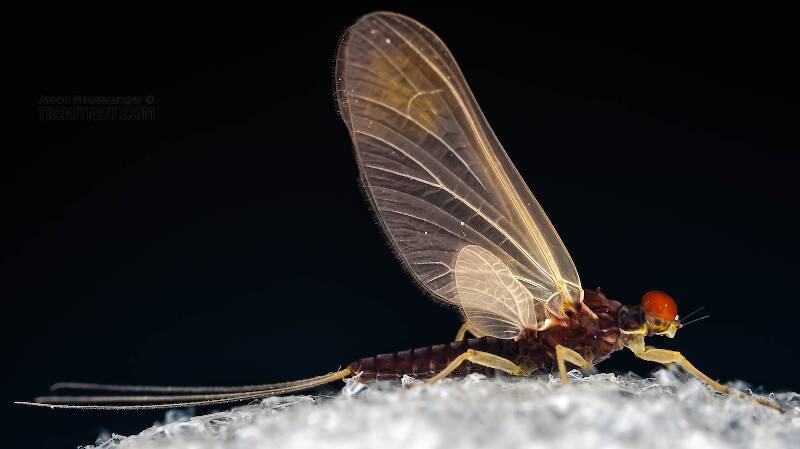
8 Nymphs
Start a Discussion of Ephemerella needhami
References
- Arbona, Fred Jr. 1989. Mayflies, the Angler, and the Trout. Nick Lyons Books.
- Knopp, Malcolm and Robert Cormier. 1997. Mayflies: An Angler's Study of Trout Water Ephemeroptera . The Lyons Press.
- Leonard, Justin W. and Fannie A. Leonard. 1962. Mayflies of Michigan Trout Streams. Cranbrook Institute of Science.
- Needham, James G., Jay R. Traver, and Yin-Chi Hsu. 1935. The Biology of Mayflies. Comstock Publishing Company, Inc.
- Schwiebert, Ernest G. 1955. Matching the Hatch. MacMillan Publishing Company.
- Schwiebert, Ernest G. 2007. Nymphs Volume I: The Mayflies: The Major Species. The Lyons Press.
Mayfly Species Ephemerella needhami (Little Dark Hendricksons)
Species Range
Common Names
Resources
- NatureServe
- Integrated Taxonomic Information System
- Global Biodiversity Information Facility
- Described by McDunnough (1925)


